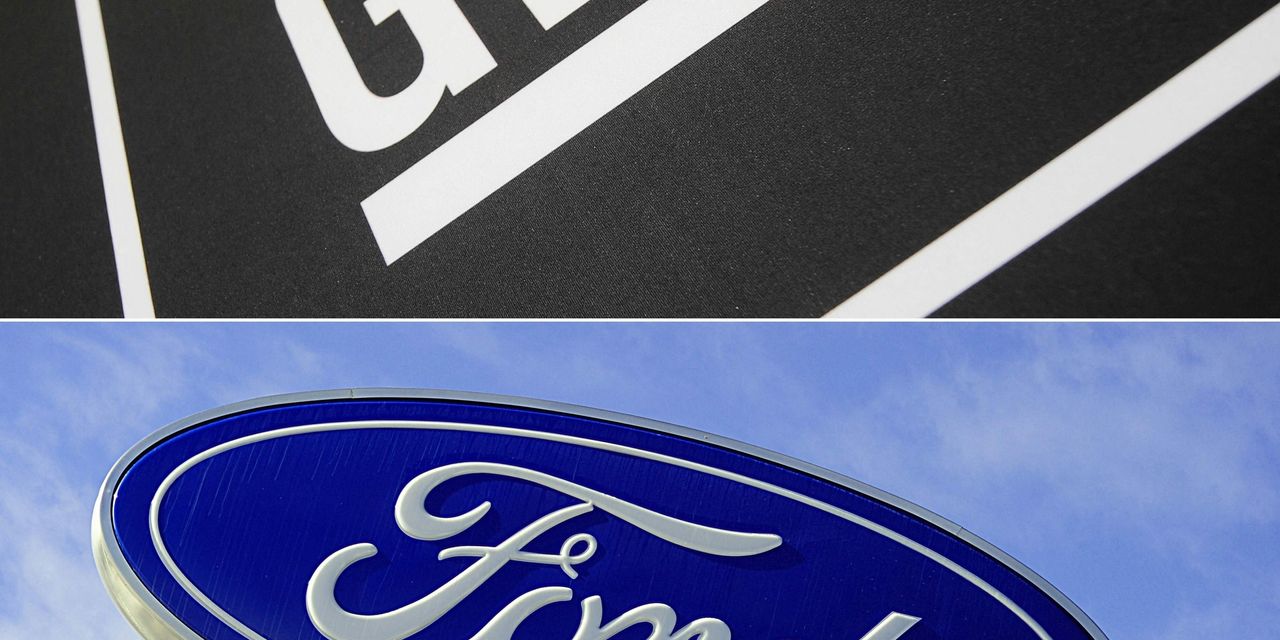General Motors Co.’s and Ford Motor Co.’s stocks are expected to come under pressure this week if U.S. auto workers go on strike as expected, but both companies’ bonds have already been under selling pressure for the last 10 days.
As the following charts from data solutions company BondCliQ Media Services show, the two companies’ most-active bonds have seen far more selling than buying over that time frame.
The next table shows trading volumes with green showing customer buying, red showing customer selling and blue showing dealer activity.
This chart shows each company’s outstanding maturities, with GM facing significantly greater refinancing needs in the next year.
About 146,000 U.S. auto workers are set to go on strike this week if GM
GM,
Ford
F,
and Stellantis
STLA,
fail to meet demands that include steep pay rises and the restoration of concessions the workers made years ago when the companies were in financial trouble, as the Associated Press reported.
Shawn Fain, the combative president of the United Auto Workers union, has threatened to strike any of the three companies that haven’t reached an agreement by the time its contract with the union expires at 11:59 p.m. Eastern time Thursday.
Both sides began exchanging wage and benefit proposals last week. Though some incremental progress appears to have been made, a final agreement could come too late to avoid walkouts by UAW workers at factories in multiple states. Any strike would likely cause significant disruptions in auto production in the U.S.
Opinion: Big Three automakers need to step up for the workers who keep them profitable
The union is seeking 46% raises in general pay over a four-year period, which would lift the per-hour pay for a top-scale assembly plant workers to about $47 an hour from $32 now.
Also read: If auto workers strike, will used-car prices increase? Will a UAW strike provide an opportunity for Tesla?
In addition, the UAW has demanded an end to varying tiers of wages for factory jobs; a 32-hour week with 40 hours of pay; the restoration of traditional defined-benefit pensions for new hires who now receive only 401(k)-style retirement plans; and a return of cost-of-living pay raises, among other benefits.
Perhaps most important to the union is that it be allowed to represent workers at 10 electric-vehicle battery factories, most of which are being built by joint ventures between automakers and South Korean battery makers. The union wants those plants to receive top UAW wages. In part, that is because workers who now make components for internal combustion engines will need a place to work as the auto industry increasingly transitions to EVs.
GM and Ford have responded with offers of 10% pay raises over the four-year stretch along with lump-sum payments. Stellantis, the former Fiat Chrysler, is offering 14.5% wage increases over the period without the lump sums.
See also: United Auto Workers reject GM counteroffer — and say ‘the clock is ticking’ for potential strike
The potential strike has reined in GM and Ford’s stocks, which are down about 9% over the last three months. Tesla Inc.
TSLA,
meanwhile, which is not a unionized shop, has gained about 8% in the last three months.
Read the full article here













Leave a Reply